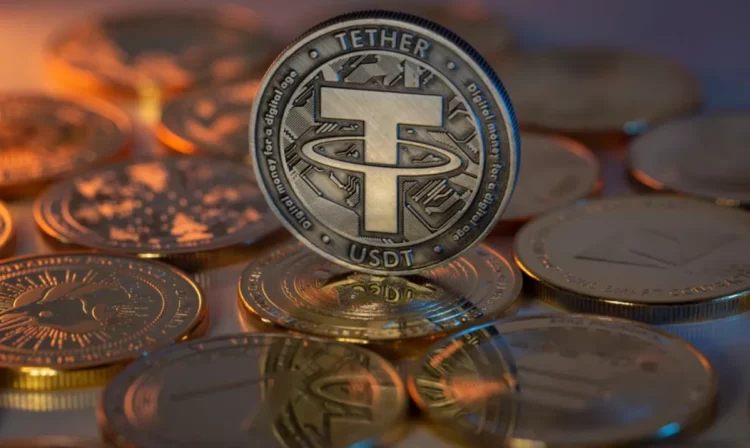The global financial landscape is undergoing a profound transformation as digital currencies, once relegated to the fringes of the tech world, now take center stage in economic policymaking and financial innovation. The growing prominence of both private cryptocurrencies and state-backed Central Bank Digital Currencies (CBDCs) is forcing a fundamental rethinking of monetary policy, financial regulation, and the role of national currencies. As countries experiment with digital currency frameworks, the implications for national economies are both vast and unpredictable—ranging from increased financial inclusion to potential disruption of traditional banking systems.
Introduction: The Rise of Digital Currencies and Their Potential Economic Implications
Over the past decade, digital currencies have evolved from a niche experiment into a major force in global finance. The explosion of Bitcoin, Ethereum, and other cryptocurrencies initially attracted investors seeking speculative gains, but the underlying technology—blockchain—offered something more transformative: a decentralized, secure, and programmable form of money.
While the private sector spearheaded the early wave of innovation, governments and central banks have now entered the arena with renewed urgency. Rising consumer interest, the declining use of cash, and concerns over monetary sovereignty have pushed policymakers to consider the introduction of digital forms of fiat currency. These Central Bank Digital Currencies aim to blend the benefits of digital payments with the trust and stability of state-backed money.
The economic implications of this shift are complex. Digital currencies could change how monetary policy is implemented, alter capital flows, challenge commercial banking models, and even reshape global trade dynamics. They offer the promise of more efficient payment systems and greater financial inclusion, but also raise questions about privacy, control, and systemic risk.
As we stand on the threshold of a digital currency revolution, the critical issue is no longer whether they will impact national economies, but how—and whether governments are prepared for the changes ahead.
Central Bank Digital Currencies (CBDCs): What They Are and How Governments Are Reacting
CBDCs represent the official response to the digital currency movement. Unlike decentralized cryptocurrencies, CBDCs are issued and regulated by central banks, maintaining the legal status of traditional fiat currencies while leveraging digital infrastructure. They can be designed for wholesale use (between financial institutions) or retail use (by the general public), depending on the central bank’s objectives.
Globally, over 130 countries are exploring or piloting CBDCs, according to the Atlantic Council’s tracker. China’s digital yuan (e-CNY) is the most advanced among major economies, with millions of users and widespread trials. The European Central Bank is deep into the exploratory phase of a digital euro, and the U.S. Federal Reserve is conducting research into the implications of a digital dollar, though it remains cautious.
CBDCs are seen as tools to modernize payment systems, counter the influence of private stablecoins like Tether and USD Coin, and preserve monetary sovereignty in a world where tech companies are launching their own financial ecosystems. For emerging economies, CBDCs can enhance financial inclusion by bringing unbanked populations into the formal economy through mobile-based digital wallets.
Yet CBDC design choices are deeply political and technical. Should they be interest-bearing? Should they replace physical cash or complement it? How should user data be protected? Each decision influences how a CBDC will interact with the economy and the banking system. While the motivations vary—from curbing illicit finance to improving cross-border settlements—the implications are universally significant.
Impact on Traditional Banking: How Digital Currencies Might Challenge Conventional Financial Systems
One of the most contentious debates surrounding digital currencies is their potential to disrupt traditional banking. In a typical two-tier monetary system, central banks supply reserves to commercial banks, which in turn lend to households and businesses. CBDCs could alter this model by allowing citizens to hold deposits directly with the central bank.
This shift, often referred to as “disintermediation,” could reduce the role of commercial banks in the deposit and lending ecosystem. If people move their funds from bank accounts to CBDC wallets, banks could face liquidity constraints, higher funding costs, and reduced profitability. This could impair their ability to lend, especially during times of economic stress.
To mitigate this, central banks are exploring “hybrid” models where CBDCs are distributed through banks and regulated intermediaries, maintaining the two-tier system while introducing digital innovations. Another option is to cap the amount of CBDCs that individuals can hold, thereby limiting outflows from bank deposits.
Private cryptocurrencies also pose challenges. While most are not legal tender, their increasing adoption for remittances, savings, and online transactions could weaken the role of national currencies, especially in fragile economies. Stablecoins, which are pegged to fiat currencies but issued by private entities, could undermine central bank control if they become widespread and unregulated.
Moreover, banks will need to adapt their business models. They must invest in digital infrastructure, upgrade cybersecurity systems, and rethink their roles in a decentralized financial ecosystem. Failure to do so could result in disintermediation not by central banks, but by fintech companies offering faster, cheaper, and more user-friendly services.
Economic Impact: The Potential Effects on Inflation, Fiscal Policy, and Economic Stability
The broader macroeconomic impact of digital currencies is still being debated, but some potential consequences are already visible on the horizon. First, CBDCs could provide central banks with new tools for monetary policy. In theory, programmable money could allow for more targeted stimulus or real-time tax adjustments. Negative interest rates, for instance, could be implemented more effectively if people were using digital wallets instead of physical cash.
However, such capabilities raise ethical and political concerns. The programmability of money could be misused for surveillance or coercive policy enforcement. Trust in central banks, already under pressure in many regions, could be eroded if citizens perceive CBDCs as a tool of control rather than empowerment.
Inflation dynamics could also shift. In a system where digital currency use is widespread and instantaneous, monetary transmission could become more efficient—but also more volatile. Policy changes could ripple through the economy faster, leaving less room for gradual adjustments. This could amplify both booms and busts unless carefully managed.

Fiscal policy may benefit from improved tax compliance, as digital transactions are easier to trace than cash-based ones. Governments could also disburse social payments directly into CBDC wallets, enhancing efficiency and reducing fraud. However, privacy advocates warn that such systems could become surveillance tools if not designed with strict safeguards.
At a global level, digital currencies may affect capital flows and exchange rate stability. CBDCs used in cross-border transactions could bypass SWIFT and other traditional clearing systems, reducing transaction costs but also weakening regulatory oversight. Countries with weaker currencies could see capital flight to stronger CBDCs, undermining monetary independence and exacerbating dollarization.
Another risk is the rise of “currency wars” in digital form. If one country’s CBDC becomes dominant in international trade or finance, it could challenge the reserve currency status of others. This would have geopolitical as well as economic implications, potentially reshaping global financial alliances and institutions.
Finally, the shift to digital money raises systemic risks. Cyberattacks, technical failures, and operational glitches could disrupt entire economies. Redundancies, security protocols, and governance frameworks must be robust enough to handle this digital leap without compromising financial stability.
Conclusion: Navigating the Digital Currency Frontier
Digital currencies are poised to redefine the contours of national and global economies. Whether through public CBDCs or private crypto innovations, the digitization of money is accelerating—and with it, the need for thoughtful policy, strategic regulation, and international cooperation.
For governments, the challenge is to harness the benefits of digital innovation while safeguarding economic stability, privacy, and financial inclusion. For central banks, it means modernizing monetary tools without destabilizing the institutions they anchor. For the private sector, it offers both disruption and opportunity.
As we step into this new era, no single blueprint exists. Countries must navigate their own paths, balancing innovation with prudence, speed with deliberation. The future of money is not just digital—it is deeply political, profoundly economic, and increasingly global.



































